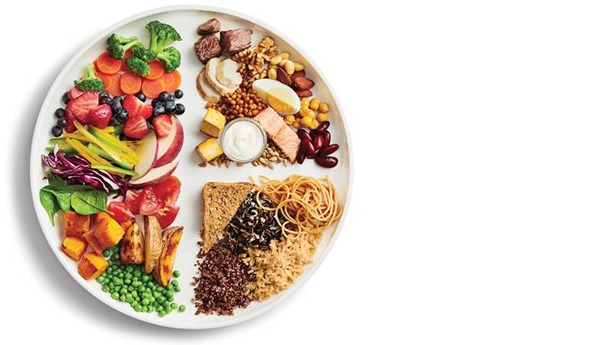Facebook Twitter (X) Instagram Somali Magazine - People's Magazine
Eating a healthy lunch doesn’t have to be complicated or boring. With the right ingredients and a bit of planning, your lunch can be both delicious and good for your body. Here are some easy tips to help you build a balanced and energizing meal each day.
1. Add Fresh Fruits
Fruits are a great way to add natural sweetness, vitamins, and fiber to your lunch. Consider including an apple, banana, orange, or pear. If you like smaller fruits, try a handful of grapes, strawberries, or blueberries. These fruits are rich in vitamins like vitamin C and potassium and can help improve digestion while giving you a healthy burst of energy.
2. Choose Whole Grains
Whole grains are better than refined grains because they keep you full longer and provide important nutrients. For your lunch, you can use whole grain bread for sandwiches, brown rice in grain bowls, or quinoa in salads. Other good options include whole wheat pasta, rolled oats, or millet. These foods are full of fiber, which helps support digestion and stable energy levels throughout the day.
3. Include Lean Proteins
Protein helps build and repair muscles and keeps you satisfied after meals. Try grilled chicken breast, turkey slices, or canned tuna in water for quick and easy animal-based options. If you prefer plant-based foods, go for lentils, chickpeas, black beans, or tofu. A boiled egg or a hard-boiled egg sandwich is also a great source of protein that’s easy to pack for lunch.
4. Fill Up on Vegetables
Vegetables are rich in vitamins, minerals, and fiber, and they should be a big part of your lunch. Add leafy greens like spinach, lettuce, or kale to a sandwich or salad. Other great additions include sliced cucumbers, cherry tomatoes, bell peppers, shredded carrots, or steamed broccoli. Aim to include at least two or three different colored vegetables for a variety of nutrients.
5. Add Healthy Fats
Healthy fats support heart and brain health and help your body absorb certain nutrients. Good sources include a few slices of avocado, a small handful of nuts like almonds or walnuts, and seeds such as chia, flax, or sunflower seeds. You can also use extra virgin olive oil as a dressing for salads or to drizzle over grilled vegetables.
6. Cut Back on Processed Foods
Highly processed foods often contain added sugar, too much salt, and unhealthy fats, which can harm your health in the long term. Try to avoid packaged snacks like chips, instant noodles, sugary drinks, and processed meats like sausages. Instead, make your meals from whole ingredients such as fresh vegetables, whole grains, and natural sources of protein.
7. Drink Plenty of Water
Drinking water during lunch helps with digestion and keeps you hydrated throughout the day. Aim for a glass of plain water or a bottle of water with lemon slices if you want extra flavor. Unsweetened herbal teas like chamomile or peppermint are also good options. Avoid sugary sodas and fruit juices, which can add unnecessary calories and sugar.
8. Watch Your Portion Sizes
Even healthy foods can lead to weight gain if you eat too much. Try to serve yourself a reasonable portion based on your hunger level. Use smaller plates or containers if needed and take your time to eat slowly. Pay attention to how full you feel and stop eating when you’re satisfied, not stuffed.
Final Thoughts
Creating a healthy lunch is all about balance. By including fresh fruits, whole grains, lean protein, vegetables, healthy fats, and staying hydrated, you’re giving your body the fuel it needs to stay energized, focused, and strong. Small, consistent changes can make a big difference in your long-term health. Start today by planning your next lunch with these simple tips in mind.
By Kahuha Gladys

